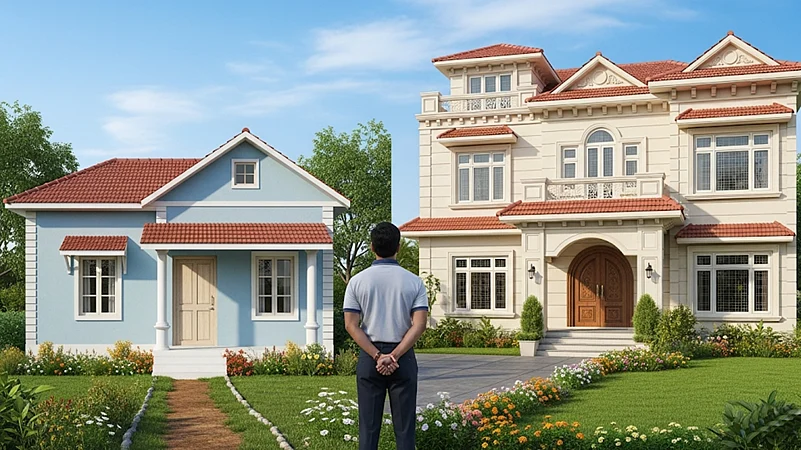
Summary of this article
Many homebuyers opt for property laddering, supplementing investments with high-yielding financial instruments like equities, mutual funds, or gold to build wealth.
“There’s no place like home” – the adage holds true for everyone, and owning a place you can truly call your own brings unmatched joy. While this aspiration is universal, it can feel out of reach for most of us because of increasing property prices, rising interest rates, and economic uncertainties. However, no matter how daunting this dream may seem, we can realise it with proper planning.
Implementing strategies like property laddering can make our dream of owning a house in a Tier 1 city -- or a hillside cottage with a garden -- come true. Here's how:
Property Laddering – Comprehending The Concept/ Investing in Emerging Markets
The idea is simple – take small and calculated steps today to be equipped enough to make a bigger leap tomorrow. Invest in a modest property in an upcoming location in a Tier 2 or Tier 3 city, hold it as the market appreciates, then liquidate to unlock capital gains. Reinvest the profit to buy a more valuable property.
Many homebuyers opt for property laddering, supplementing investments with high-yielding financial instruments like equities, mutual funds, or gold to build wealth.
“Unlike remote locations with no or limited development prospects, regions closer to industrial corridors or economic hubs have comparatively more potential for value appreciation. Let us consider cities like Ambala and Ludhiana, Rajkot and Vadodara, and Greater Noida. Their proximity to commercial and industrial hubs, infrastructure, and rising housing demand makes them very attractive to homebuyers,” says Atul Monga, CEO & Co-Founder, BASIC Home Loan.
As urbanisation expands, non-metro cities will continue to experience a high demand for housing, which is expected to rise. A property purchased today in such locales for Rs 50 lakh might be worth, say, Rs 90 lakh a few years down the line, generating significant returns even after considering capital gains tax.
Financial Mechanics of Property Laddering
Let’s understand this with an example. Assume you have a house in a rapidly-developing Tier 3 city that’s expected to generate substantial returns.
“Now, you aspire to upgrade to a Rs 1.5 crore property in a metro and start exploring financing options. Financial institutions typically provide 75 per cent to 80 per cent of the property’s value, and if you opt for a 75 per cent loan-to-value ratio, the down payment amount would be Rs 37.5 lakh, and borrow the remaining amount (Rs 1 crore and 12.5 lakh) as a loan, repayable over time,” says Monga.
After repaying 20 per cent of the older loan (Rs 10 lakh), you sell off the earlier property for around Rs 90 lakh, and then utilize the amount to prepay the loan.
Alternatively, you could also directly reinvest Rs 90 lakh from the earlier property into the new one and reduce the loan amount to just Rs 60 lakh. This move will substantially lower your debt and accelerate repayment.
In terms of tax, under Section 54 of the Income Tax Act, 1961, long-term capital gains acquired by selling off residential property are exempted if reinvested in a new housing within a stipulated time-frame. This makes transitioning between homes more financially viable.
Strategic Choices Reflecting Enduring Values
Making the right housing decision isn’t always about making grand gestures; rather, it is about making the right ones. Whether you are new to this or moving up the ladder, always consider making well-researched and thoughtful decisions instead of relying purely on impulse.
Remember, a spacious home may symbolise achievement, but the real measure of success lies in how strategically you manage your finances and assets; and how smartly you navigate market dynamics.










